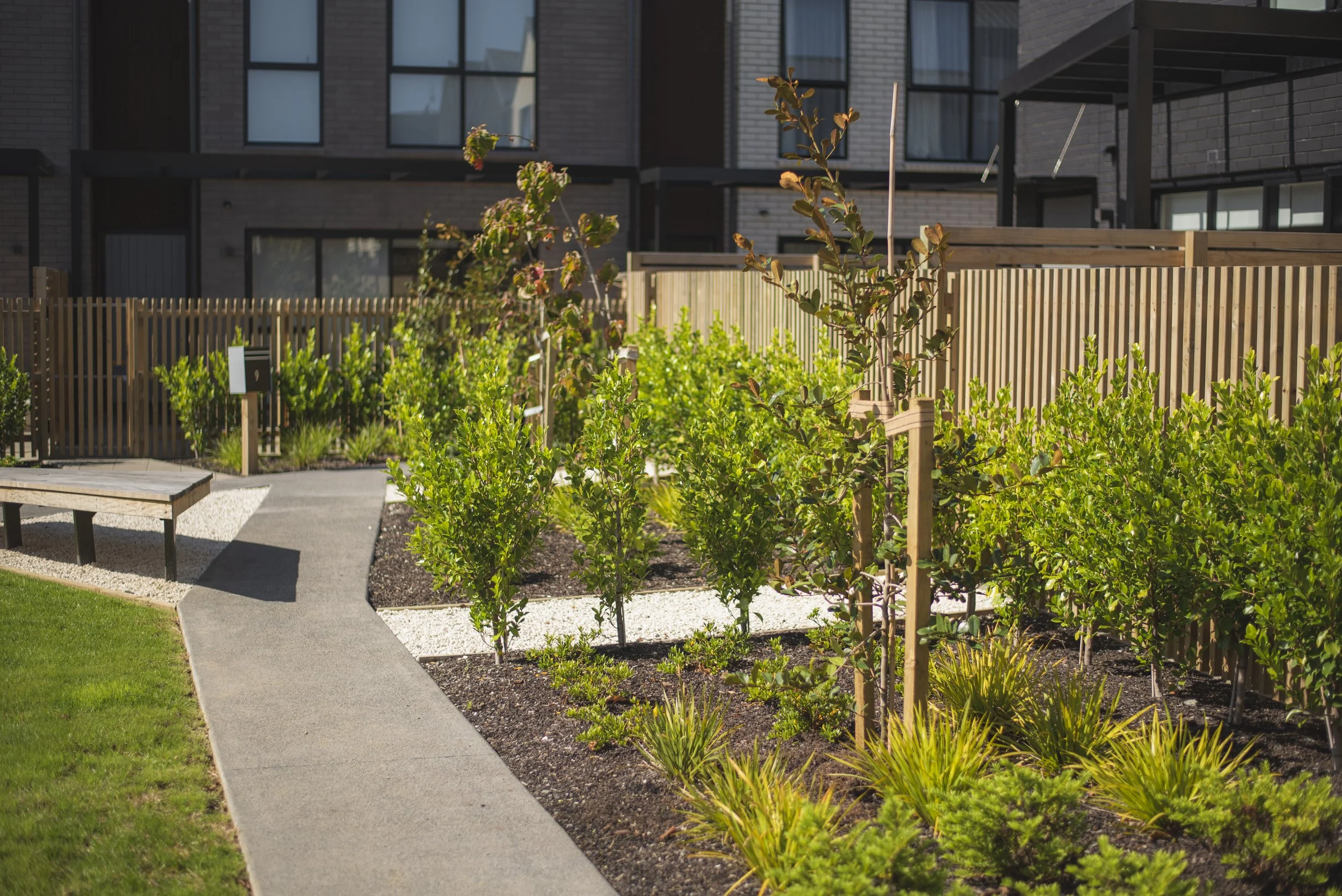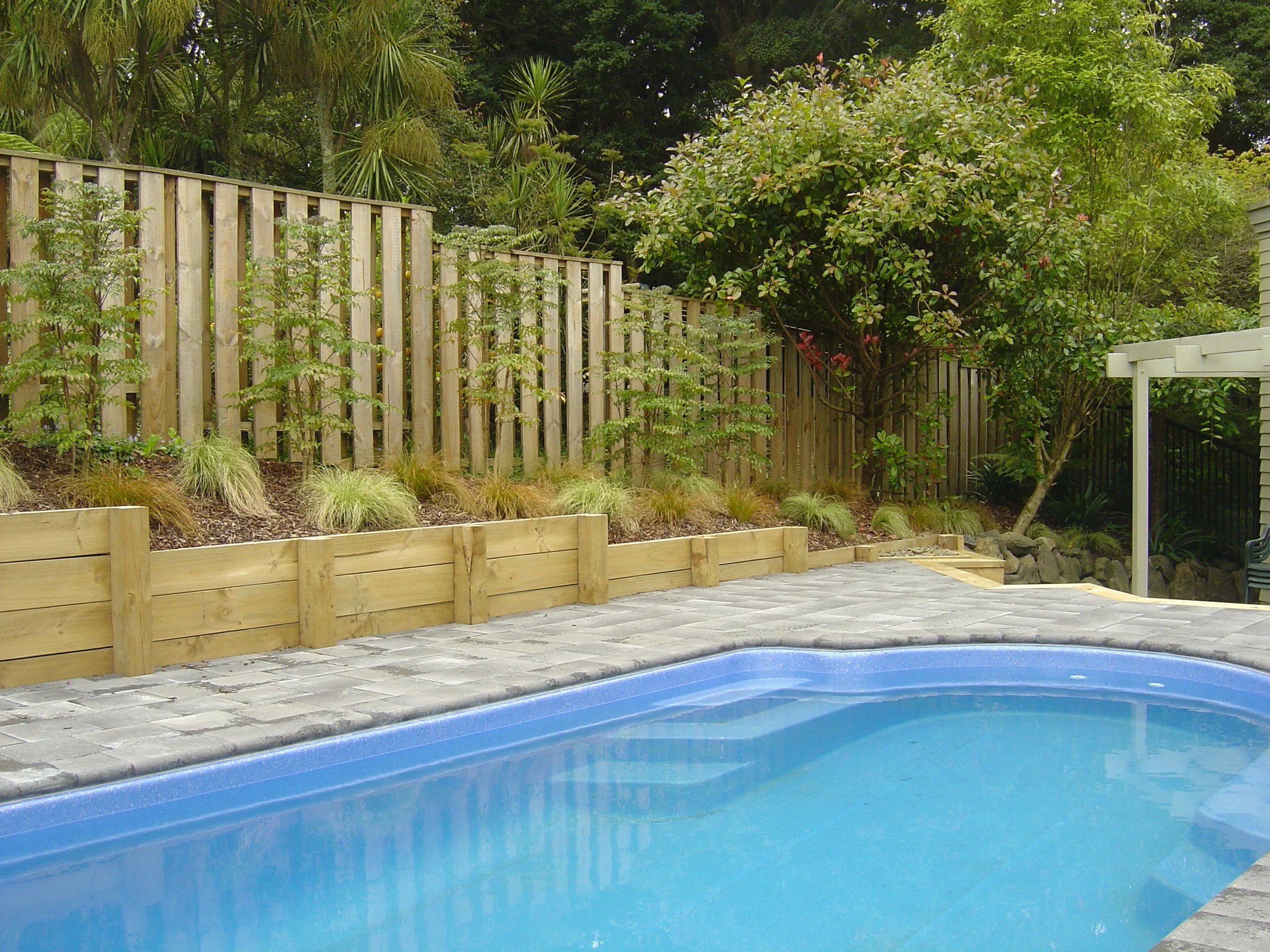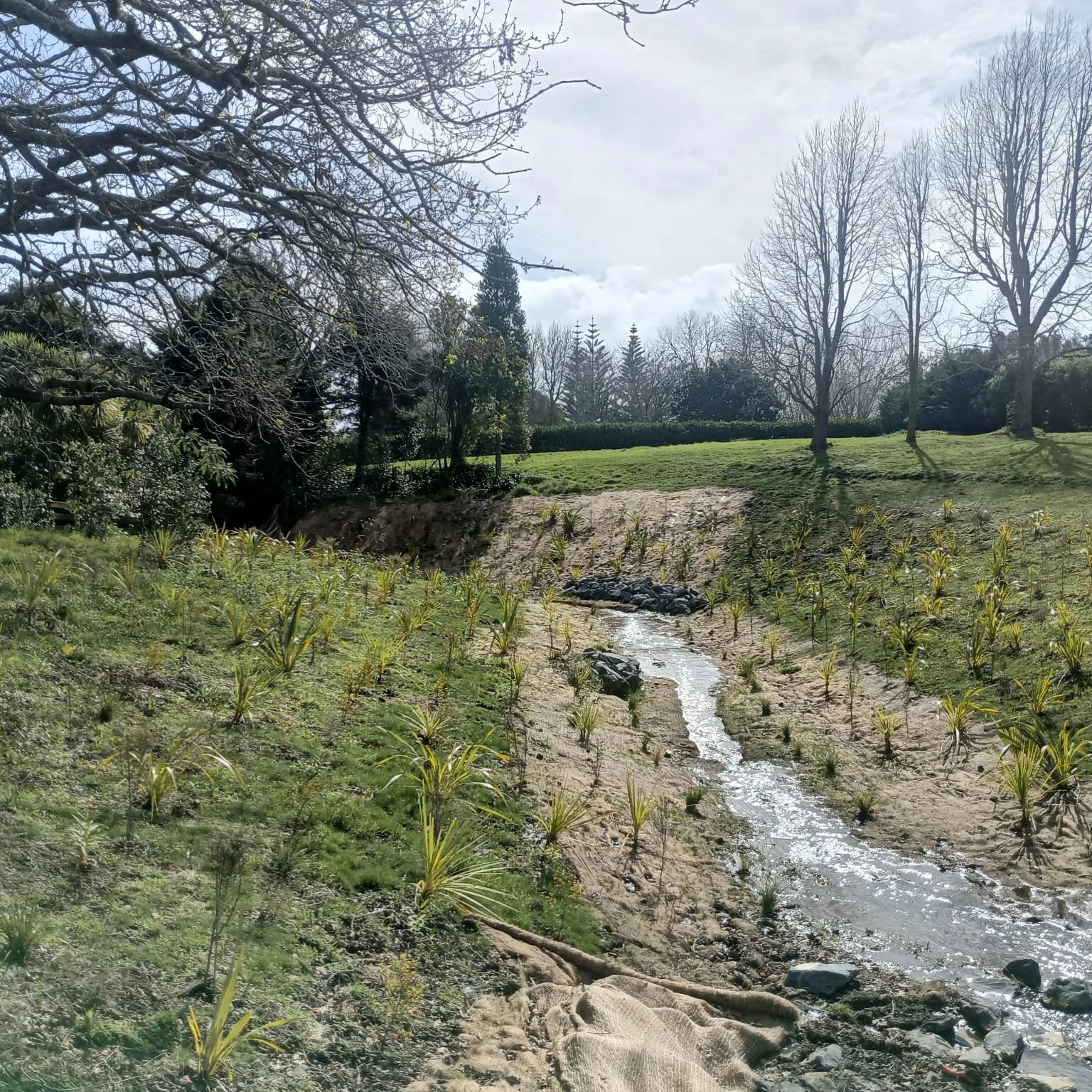
A Snapshot of What We Do – and What to Think About
At Ace Landscapes, we offer a full suite of landscape services to suit everything from high-end residential builds to family homes on small urban sections to larger lifestyle blocks. Whether you're starting from scratch or reshaping an existing space, here's a closer look at what we offer — and some important things to consider along the way.
Things To Think About
Apples For Apples
Getting Value for Your Money in Landscaping
How do you know if you're getting value for money? The key is to fully understand what you're getting and ensure that when comparing quotes, you're truly comparing apples to apples.
The challenge is that cost and specifications can vary significantly, making it difficult to pinpoint the differences. Let’s use a simple analogy to explain:
Think about a car. Any car. You have the base model, then two or three upgraded versions—each adding more features, safety enhancements, or cosmetic improvements. At a glance, they all look similar and share the same core components, but once you drive them or inspect them closely, the differences become obvious.
Landscaping is no different. Price variations often stem from factors such as:
Preparation Quality: The time and effort put into preparing the site can significantly affect the final result.
Materials Used:
Timber: Different grades and types affect durability and aesthetics.
Decking: Varies in material, thickness, and finish.
Pavers: Differences in strength, slip resistance, and mold resistance impact both cost and longevity.
Lighting & Electronics: The quality of pumps, irrigation controllers, and electric gate motors can change performance and reliability.
Soil & Mulch: The quality and depth of topsoil, garden mix, and bark influence long-term plant health.
There are also aesthetic choices that influence cost:
Concrete: Adding pebbles or oxides enhances appearance but increases cost.
Pavers, Tiles, and Decking: Locally sourced materials may differ in price from imported options, and quality varies widely.
Finally, the scope of work and quality of workmanship can be a major factor. A project’s starting point can vary—some begin before site works, while others commence after. The level of post-project support also differs: does the contractor include establishment and initial maintenance, or is it left to the client? Quality of finish takes skill and time.
Since many of these details aren't immediately clear, it's crucial to work with a contractor you trust. Having an open conversation will help you understand exactly what you're getting and how adjustments—whether adding or removing elements—impact costs.
Ultimately, the best value comes from transparency, quality craftsmanship, and making informed decisions that align with your expectations and budget.
Common Landscaping Mistakes and How to Avoid Them
Landscaping sounds fun — until you’ve planted a tree too close to the house, built a patio that floods, or realised your “low-maintenance” garden is anything but.
Here are some of the most common landscaping blunders (we’ve seen a few in our time) — and how to steer clear of them.
Planting Without a Plan
You saw a plant on Instagram or at Mitre 10. It looked cute. You bought it. Now it’s 3 metres tall and shading the entire lawn.
Avoid it:
Know your plants before you plant them
Check their mature size, spacing, and sun/water needs
Stick to a planting plan (or get help creating one)
Ignoring Drainage
“Water always finds a way” — especially if you haven’t allowed for proper drainage.
Avoid it:
Consider slope, runoff, and where water naturally goes. If you’ve altered ground levels, think about where the water used to go — it will find a way, often where you least want it
Use free-draining base layers under paving, and make sure water can escape
If in doubt, it’s far easier to do it right once than to fix a problem later
Doing Everything at Once
We get it — you’re excited. But blowing the budget trying to finish the whole property in one go can lead to rushed decisions and cut corners.
Avoid it:
Prioritise key zones (like the front entry or outdoor living area)
Stage your landscaping in manageable chunks
Get the structure right first — then add to it one step at a time
Choosing the Wrong Plants for the Site
Some plants hate wind. Others don’t like wet feet. Choosing what “looks nice” instead of what will thrive can lead to sad, struggling gardens — and wasted money replacing dead plants.
Avoid it:
Learn your site’s sun, wind, and soil profile — it likely varies across your property
Choose tough, reliable plants suited to local conditions
Ask a nursery or landscaper for advice — make sure they understand your site, not just the plant
It’s far easier (and more cost-effective) to choose the right plant for a site than to try and manipulate the environment. If you're an experienced gardener, you can do this — but you need to know what you're doing
Underestimating Maintenance
That lush green hedge? It grows like mad. That cute pebble path? It’s now a weed farm. Even “low-maintenance” gardens need some love.
Avoid it:
Choose plants and materials that suit your lifestyle
Use mulch where it makes sense — it suppresses weeds and helps retain moisture
Understand what upkeep will be required before installing
Going Too Trendy
Timber sleepers as steps? Nice. Painted blue rocks shaped like dolphins? Hmm. Trends come and go — and outdoor features are hard to undo.
Avoid it:
Choose timeless materials for key areas
Use trendier plants or features in ways that are easy to update or that will age well
Ask yourself: Will I still love this in 5 years?
DIY Beyond Your Skill Set
We love a good DIY — but some things (like retaining walls, irrigation, or drainage) are best left to the pros.
Avoid it:
Be honest about what you can and can’t do
Get help for the technical or heavy stuff
Combine DIY with professional help where it makes sense
Overlooking Council Regulations
Oh yes — there are rules about what you can and can’t do. Nothing worse than building something and finding out it’s non-compliant.
A lot can be done without council involvement, but this can be a trap — there’s often a fine line between what’s okay and what needs consent.
Avoid it:
If you’re building any structure (sheds, pergolas, outdoor rooms), check the rules with your council
On newer urban sites, too much paving or concrete can breach site coverage limits
Retaining walls near boundaries, and any structure with a fall greater than 1 metre, often require fencing to a specific standard
Pools are obvious, but spas may also require fencing unless the right lockable lid is used; water features over 400mm deep may also need fencing
There’s more — but these are the most common traps
Landscaping should be exciting, not frustrating. Avoid these common pitfalls and you’ll save money, time, and maybe even your back.
When in doubt, ask someone who’s done it (many times) before.
It all begins with an idea. Maybe you want to launch a business. Maybe you want to turn a hobby into something more. Or maybe you have a creative project to share with the world. Whatever it is, the way you tell your story online can make all the difference.
Designing for Lifestyle – Outdoor Living Spaces That Work
Your outdoor space should be more than “just a backyard.” Whether it’s BBQ central, a zen zone, or somewhere the kids can burn energy, smart landscaping makes a huge difference to how well your space actually works.
Let’s look at how to design outdoor spaces that fit real life (not just Pinterest).
1. Start With How You Live
Ask yourself:
Do you entertain regularly?
Need space for kids or pets?
Want a vege garden or space to grow food?
Prefer lawn, patio, or something else?
Pool, spa, lighting
What changes in need do you see in the future,
Parking, additional parking for boats, caravans, kids vehicles etc
Designing for lifestyle means making the space work for you, not someone else’s idea of perfect.
2. Define Your Zones
A great landscape flows like a good floor plan. Think:
Entertaining area (deck, patio, outdoor dining) How many
Relaxation zone (loungers, spa, firepit)
Play or lawn space
Utility space (bins, washing line, sheds — keep them hidden but accessible)
Paths, planting, and screening help guide people naturally through the space.
3. Connect Indoor and Outdoor Living
A seamless transition from inside to out makes outdoor living easy and natural.
Ideas:
Use similar materials (colours, flooring styles) to tie spaces together
Sliding or bifold doors to open the house up
Covered pergolas or umbrellas to make outdoors usable year-round
4. Think About Shelter and Shade
Nothing ruins a nice backyard faster than gale-force wind or blinding sun.
Options:
Planting for windbreaks
Pergolas, umbrellas, or shade sails
Screens or slatted timber for privacy without feeling boxed in
5. Make It Functional (and Comfortable)
Lighting, power outlets, seating — the little things make a big difference.
Use soft lighting for ambience
Install power near outdoor dining areas
Include built-in seating or planter boxes that double as seats
Consider outdoor kitchens or pizza ovens if you’re into cooking
6. Keep Maintenance in Mind
You don’t want your “relaxation space” to become a chore.
Go for durable materials (composite decking, stone, concrete)
Use planting that fits your time and energy levels
Install irrigation if watering is a hassle
Final Word
A well-designed outdoor space should feel like an extension of your home — lived in, loved, and easy to enjoy. Start with your lifestyle, build around it, and you’ll end up with a space you actually use (not just look at through the window).
It all begins with an idea. Maybe you want to launch a business. Maybe you want to turn a hobby into something more. Or maybe you have a creative project to share with the world. Whatever it is, the way you tell your story online can make all the difference.
Five Steps to a Great Landscape
Creating a landscape that truly works for your space and lifestyle doesn’t happen by accident — it happens through a clear, well-proven process. Here’s how we make it easy, enjoyable, and effective:
1. Consultation
Let’s talk about what matters to you.
Every great project starts with a good conversation. We take the time to understand your goals, your lifestyle, and what you want from your outdoor space. Whether you have a clear vision or don’t know where to start, we’ll guide you through the process and tailor everything to suit your needs.
2. Design
Smart planning leads to stunning results.
A detailed design is the foundation of a successful landscape. It allows us to explore ideas, make adjustments early, and ensure everyone’s on the same page before work begins. A good plan avoids surprises — saving time, money, and stress later on.
3. Proposal
Clear scope. Transparent pricing.
Once we’ve locked in the details, we’ll provide an accurate quote based on the design and your chosen materials. For simpler projects, we can often price things up straight after the consultation. No guesswork — just straightforward, honest pricing.
4. Construction
Now the fun begins — we bring your landscape to life.
Our experienced team gets to work, building your new outdoor space with care and precision. We keep you updated throughout the process and make sure everything runs smoothly, safely, and to the highest standard.
5. Maintenance
Keep it looking great — without the hassle.
Once your landscape is complete, we’ll walk you through how to care for it, or offer ongoing maintenance options if you'd rather leave it to us. Either way, we make sure your new space stays looking its best for years to come.













